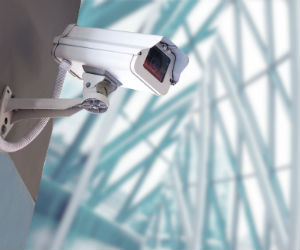Asia plays a pivotal role in current global economic growth. About 60 percent of the world’s population live in this continent, which is rapidly making strides towards becoming smarter and safer.
The security industry entered 2015 with strong anticipation of technological advancements overshadowed by concerns of economic gloom. The year 2014 had ended on a rather positive note after sporadic signs of economic growth from the eurozone and emerging markets like India helped to offset weakness in China.
For Asia alone, the expectations were sky-high. According to the Asian Development Bank (ADB), developing countries in the region would expand at about 6.3 percent through 2015 and 2016. In line with this, several emerging Asian economies have been pushing for further urbanization, increasing public spending on verticals such as public transport and infrastructure.
On the technology side too there were several factors to look forward to. Questions a&s had asked major industry players at the beginning of 2015 had pointed toward expectations of increased demand for IP technology, integrated, total solutions, and cloud-based, mobile services.
The concept of the Internet of Things (IoT) was also gaining momentum then, along with the idea of connected devices spread over small areas to become smart homes and large areas to become smart cities. This was anticipated to pave way for more solution-oriented approaches that would break the boundaries of traditional applications and merge with neighboring sectors.
But loaded with such expectations, how did the year actually fare? Having seen the year through, we went back to industry players and analysts to understand their take on how things unfolded.
Region-Specific Factors Contributing to Growth
 Rapid urbanization and infrastructure growth
Rapid urbanization and infrastructure growth
is expected to boost Asian security demand.
Industry players across the board agree the Asian security market has continued to see strong growth in 2015. Magnus Zederfeldt, Regional Director for South Asia Pacific at
Axis Communications put this in concrete terms, giving his company’s estimated market expansion figures.
“We feel the demand is strong in all of South and Southeast Asia for our smart safety products,” Zederfeldt said. “In general there is an expectation of more than 20-percent market growth for smart IP solutions.”
Several research reports too point to the region as the fastest growing among global markets. According to Transparency Market Research, the Asia Pacific physical security market is projected to see growth at a CAGR of 17 percent from 2013 to 2019. A report from Micro Market Monitor said the region’s perimeter security market would expand at a CAGR of 11.3 percent from 2014 to 2019.
But given the diverse nature of markets in this region, the factors driving growth vary. Not all Asian economies are growing at the same pace, nor are their security requirements the same. Harish Vellat, GM of Asia Pacific at
Honeywell Fire and Security, hinted at this as he pointed out that a number of trends are driving the strong growth seen in Asia.
“These include rapid urbanization among countries in the region, ongoing growth in the middle class, continued industrialization, widespread penetration of mobile Internet applications, and increased investments being made in infrastructure, such as highways, airports, and seaports,” Vellat said. He added that countries like Vietnam and Indonesia have been experiencing good growth in the year.
Subhranshu Sekhar Das, VP and Practice Head for Aerospace, Defense, and Security in Greater Asia at Frost & Sullivan said each country in this region has its own priorities, and budgets are aligned accordingly.
“For instance, in Indonesia, the priorities include crowd-management systems, tsunami warning, and border control systems,” Das said. “In Malaysia, a lot of development is taking place in maritime enforcement agencies and naval platforms. Coming to Thailand, the political instabilities prompt the need for more efficient crowd management systems.”
In more developed countries like Singapore, the requirements are far more sophisticated. Das said cyber security is a major concern in Singapore. Others have pointed to multi-faceted problems like increasing population and complexity of security threats, crime rate, issues related to housing, traffic management, and energy utilization.
This gives a broad picture of the Asian security market. But such general estimates apart, industry players attribute growth in 2015 in part other factors.
The Continuing Move to Digitalization
 Several verticals in Asia are still in the process
Several verticals in Asia are still in the process
of migrating to IP, thereby boosting demand.
The move from analog to digital technology has been going on for quite a few years now, but the market is yet to reach complete migration. The year 2015 saw a stronger push in this direction, helped by stronger demand for more unified systems and solutions.
“The technology shift from analog to IP video systems continues according to expectations, the underlying drivers for this are both demand for broader integration with other systems as well as increasing demand for smart business applications,” Axis’ Zederfeldt said. “Today, basically all larger installations are specified for IP and open standard platforms, thus the demand for our solutions are very strong and will continue to grow.”
But the strong growth that security solution providers boast in the region does not come without certain doubts on its sustainability. Several economic issues that have emerged in the recent years remain unsolved, tugging at growth.
Oil Price Concerns Shadowing Growth
 Drop in oil prices have hurt some Asian markets,
Drop in oil prices have hurt some Asian markets,
but the region has remained resilient in 2015.
The drop in global oil prices that began in 2014 is the most crucial among such concerns. A particular case to point out is Malaysia, whose economy relies significantly on oil. Combined with certain other factors like drop in currency value and political tensions, the oil-price fall has cast doubts on the Malaysian market’s potential in the year.
But such concerns have been offset by the robust overall demand in the region. Certain verticals may have slowed, but others have compensated for them.
“Despite this [weak oil prices], in all major SEA countries, we’ve seen good growth in one or more market segments as investment flows into other areas,” Vellat said. “In Malaysia, for example, the residential sector continues to be robust. So manufacturers must find suitable offerings in new niches that can drive growth.”
On the other hand, countries like India that rely on imported oil have benefited from the price dip, narrowing their trade deficits and enabling more investments. The fact that oil price is expected to remain low in the long term should come as an encouragement for the emerging economies of Asia.
Stage Set for Growth in Asia
Asia plays a pivotal role in current global economic growth. About 60 percent of the world’s population live in this continent, which is rapidly making strides towards becoming smarter and safer.
For the security industry, Asia offers the best possible catalyst for growth. This is not just because of the developing stage the market is in, but also because of concerns such as terrorism and geopolitical tensions.
The year 2015 has seen global solution providers taking bold steps to expand in Asia, understanding the needs that are unique to the region. In the coming years, having a strong presence here will become a key deciding factor for growth.